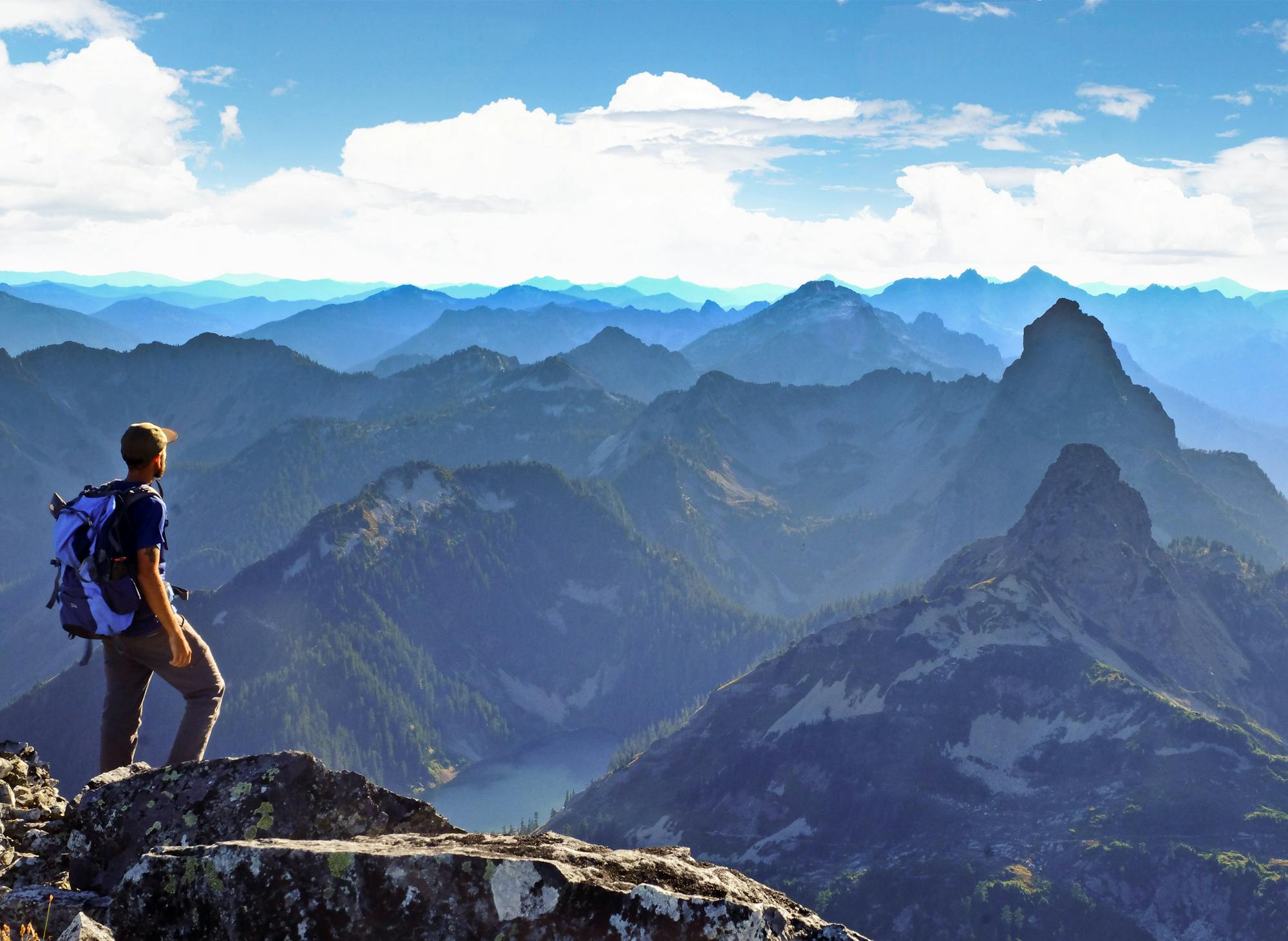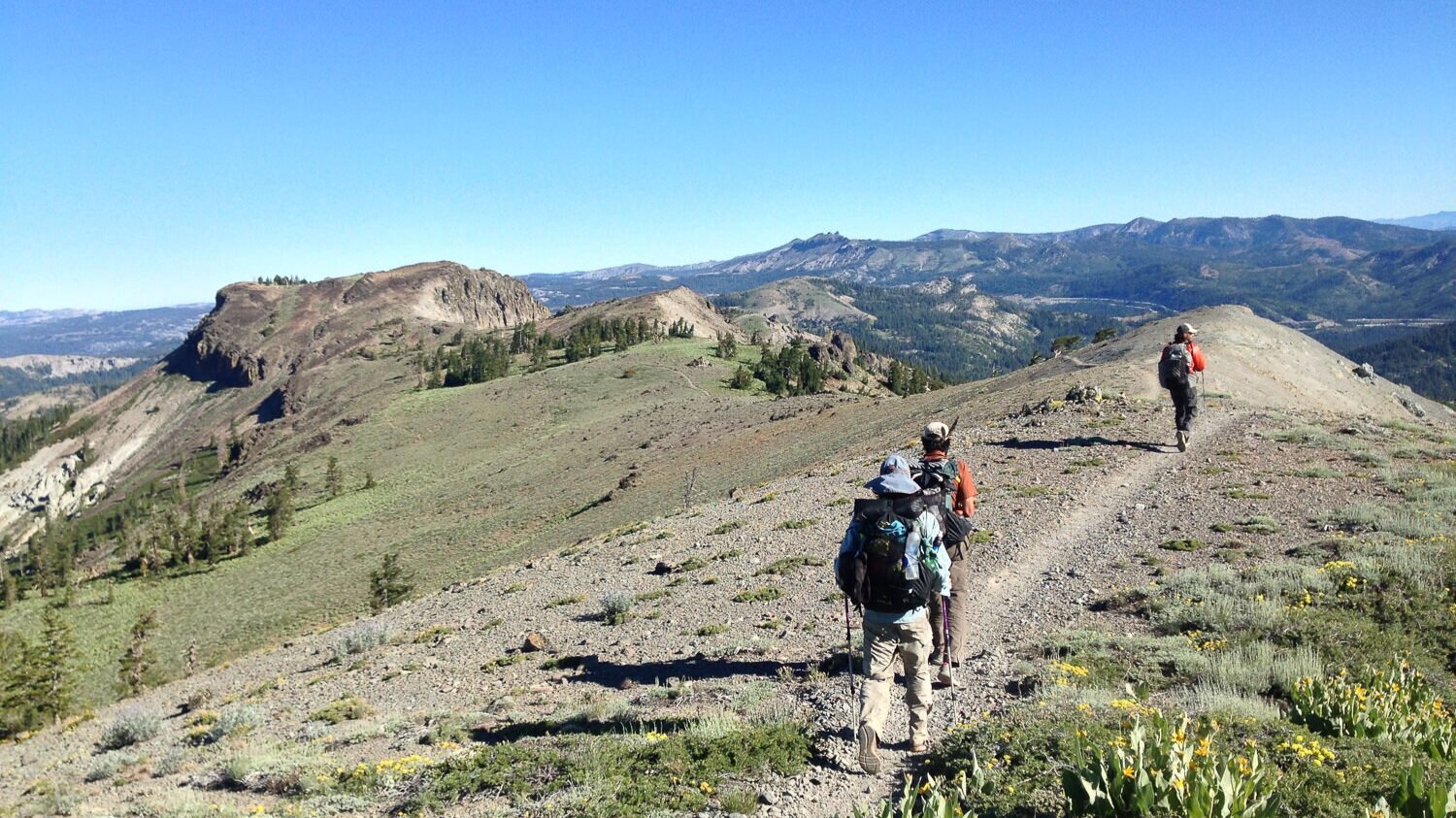The US West Coast's 'Greatest Footpath': The Pacific Crest Trail
The Pacific Crest Trail (PCT), stretching 2,650 miles from the Canadian border to the Mexican border, is often hailed as the "greatest footpath" of the US West Coast. This epic trail offers adventurers a unique opportunity to traverse some of the most stunning and remote landscapes in North America.
From cascading waterfalls and snow-covered badlands to dense ancient forests and rugged mountain peaks, the PCT encapsulates the essence of America's wilderness.
A Historic Journey

Clarke dedicated much of his life to creating this border-to-border trail, which he described as "traversing the best scenic areas and maintaining an absolute wilderness character."
The Trail Today
 In 2023, seeking a challenge that would break them from their desk-bound lives, Gavin Scarff and his partner, Claire Taylor, set out to complete the entire PCT. Their journey took them through diverse landscapes, including the state of Washington, which is home to 31 designated wilderness areas. Washington's portion of the PCT, covering 505.7 miles, is particularly notable for its beauty and remoteness, passing through remote passes, snowy peaks, and dense ancient forests.
In 2023, seeking a challenge that would break them from their desk-bound lives, Gavin Scarff and his partner, Claire Taylor, set out to complete the entire PCT. Their journey took them through diverse landscapes, including the state of Washington, which is home to 31 designated wilderness areas. Washington's portion of the PCT, covering 505.7 miles, is particularly notable for its beauty and remoteness, passing through remote passes, snowy peaks, and dense ancient forests.
Washington's section of the PCT leads hikers through a greater percentage of designated wilderness areas (63%) than the other states the trail passes through. This high percentage is a testament to Clarke's vision of preserving a slice of the original American wilderness. Hikers like Scarff and Taylor experience the raw, unfiltered beauty that these protected areas offer.
The journey in Washington begins in the North Cascades, a vast mountain chain known for its jagged peaks, subalpine meadows, glaciers, and waterfalls. Chris Morgan, an ecologist and filmmaker who has lived in the North Cascades for over 30 years, notes, "If you look at a map of Washington state, all the wildest places run down the spine of the North Cascades mountains." This spine is where Washington's wilderness areas protect the wildest and most untamed landscapes.
The Challenges and Rewards
Hiking the PCT is not without its challenges. Scarff and Taylor encountered bear droppings, swarms of mosquitoes, and extreme weather conditions. Yet, these difficulties were balanced by the serene and rugged beauty of Washington's landscapes. Kimberly Myhren, a fellow hiker, aptly described it: "What makes [the PCT in Washington] difficult to hike is also what gives Washington its serene and rugged beauty."
The high-altitude terrain of the PCT in Washington is demanding. It took Scarff and Taylor a full month to reach the Oregon border, having ascended nearly 100,000 feet – the equivalent of climbing Everest three times. Despite their rigorous training, they found themselves exhausted most days, falling asleep by 8 PM. Managing weight and calorie intake became a constant battle.
The trail offers numerous opportunities for wildlife encounters. Scarff and Taylor had five bear encounters in Washington, including a close interaction with a mother and two cubs. They also heard coyotes playing at dawn, saw deer that were unafraid of humans, and passed marmots that whistled loudly to signal their presence.
The PCT is maintained by the Pacific Crest Trail Association (PCTA) and a team of dedicated volunteers. Kage Jenkins, a PCTA member, explained that trail maintenance in wilderness areas requires non-motorized tools like crosscut saws. This approach ensures that the trail retains its wild character. "The trail itself always finds a way to stay wild," Jenkins remarked.
Fire and Regeneration
Wildfires are a significant threat in Washington. In 2014, the Carlton Complex Wildfires burned over 256,000 acres. However, these fires also provide opportunities for nature. Some animals, like the black-backed woodpecker and fire chaser beetle, have evolved to thrive in burn zones. Plants like the snowbrush even use fire to stimulate germination.
A warming climate means that the frequency and magnitude of wildfires are likely to increase. In late July, Scarff and Taylor encountered their first real burn zone, a sobering reminder of how quickly landscapes can be altered.
The Connection to Nature
Hiking the PCT offers a profound connection to nature. As Michael DeCramer, policy and planning manager at the Washington Trails Association, explained, "Visiting a wilderness area can afford an experience of remoteness that is difficult to find elsewhere."
Conclusion
The Pacific Crest Trail stands as a testament to the enduring allure of America's wilderness. From its inception by visionaries like Catherine Montgomery and Clinton C. Clarke to the tireless efforts of volunteers maintaining its rugged beauty, the PCT remains an iconic journey that captures the essence of adventure and natural splendor.
For those who undertake this epic trek, the trail offers not just a physical challenge, but an opportunity to reconnect with the raw, unfiltered beauty of the natural world. Whether navigating the jagged peaks of the North Cascades, encountering wildlife in their natural habitats, or reflecting on the resilience of nature in the face of wildfires, hikers on the PCT experience a profound sense of place and purpose.
In traversing this "greatest footpath," adventurers are reminded of the importance of preserving these wild spaces, ensuring that future generations can also find solace and inspiration in the untouched beauty of the Pacific Crest Trail.

















































